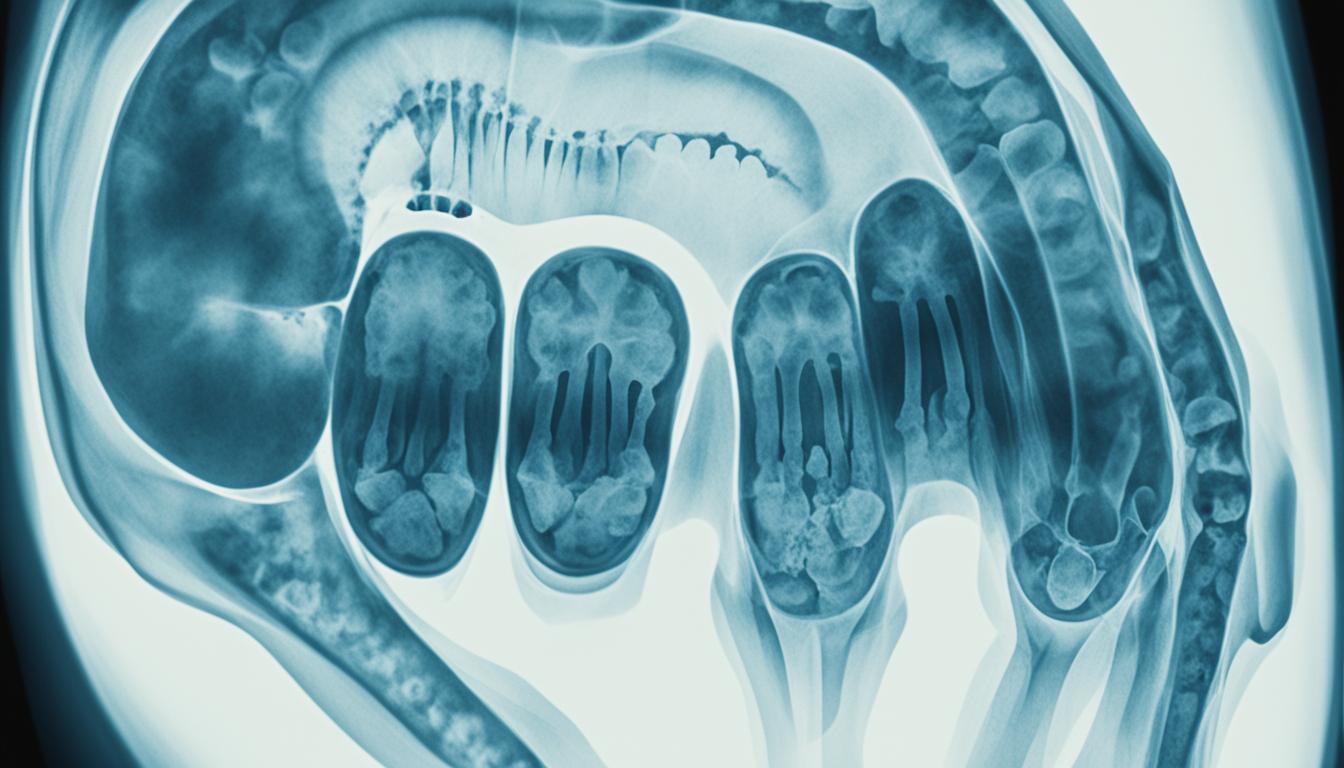Jaw tumors and cysts are not common but can develop in the jaw bone or in the mouth and face’s soft tissues. This includes odontogenic cysts, which are fluid-filled sacs, and tumors that can be benign or malignant. They might not show symptoms, but doctors can find them during checkups or imaging tests.
The treatment of jaw tumors and cysts depends on if they’re benign or malignant. One common way to deal with them is through surgery. But, stem cell therapy is also being looked at as a possible different treatment method.
Key Takeaways:
- Jaw tumors and cysts are rare and appear in the jaw bone or soft tissues of the face.
- They may manifest as odontogenic cysts or tumors, which can either be benign or malignant.
- These conditions often show no symptoms and are found during routine checks or tests.
- Surgery is a common treatment, but for some cases, stem cell therapy is being considered.
Types of Jaw Tumors and Cysts and Detection Methods
In the oral cavity and maxillofacial area, many jaw tumors and cysts can form. They include:
1. Ameloblastic Carcinoma
Ameloblastic carcinoma starts in the enamel organ or odontogenic epithelium. It’s rare and grows aggressively.
2. Clear Cell Odontogenic Carcinoma
This rare tumor comes from structures like the dental lamina or odontogenic cyst lining. It has clear or pale-looking cells.
3. Primary Intraosseous Carcinoma
This tumor begins in the jaw bone and can come from odontogenic cysts’ linings. It’s a serious tumor with different levels of how quick it grows.
4. Sclerosing Odontogenic Carcinoma
A rare malignant tumor, it shows fibrous tissue and epithelial nests. It usually starts from odontogenic cysts.
5. Odontogenic Carcinosarcoma
A very rare tumor with both malignant epithelial and mesenchymal parts. It’s highly aggressive and often comes back after treatment.
6. Odontogenic Sarcomas
These are rare and come from the tooth-forming tissue’s connective parts. Examples are ameloblastic fibrosarcoma and odontogenic fibroma.
Jaw tumors and cysts may not show symptoms early on. But, getting regular dental check-ups and scans can help spot them. Doctors use tests like x-rays, CT scans, and MRIs to find and analyze these issues.
For a clear diagnosis, a biopsy might be needed. This involves taking a tiny piece of the concerning tissue for microscopic examination. A pathologist looks at this tissue to determine if it’s harmless or cancerous.
Treatment and Prevention of Jaw Tumors and Cysts
The way jaw tumors and cysts are treated depends on how severe they are. Usually, they are removed with surgery. There are different methods for doing this, such as excisional biopsy and enucleation. Sometimes, a bone graft might be needed after surgery to help healing.
After surgery, it’s important to have regular check-ups to spot any signs of the tumor or cyst coming back. If they do come back, several things could be the cause. This includes the type of tumor, how well it was removed at first, and any other health issues. Catching a comeback early on is really crucial.
To keep jaw tumors and cysts from happening, it’s key to avoid things that raise the risk. This means staying away from harmful substances and taking good care of your mouth. Visiting the dentist often and treating any oral problems quickly can lower your risk.

